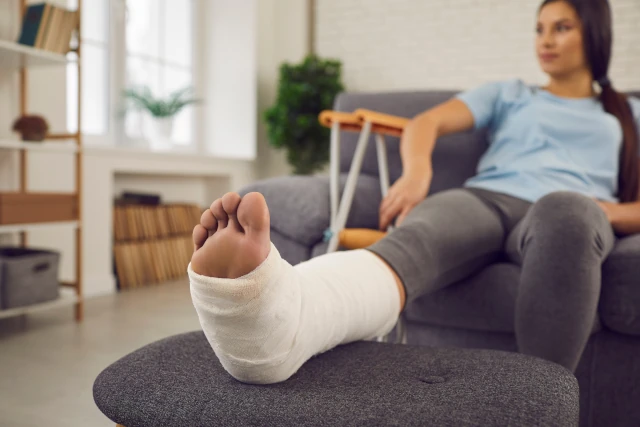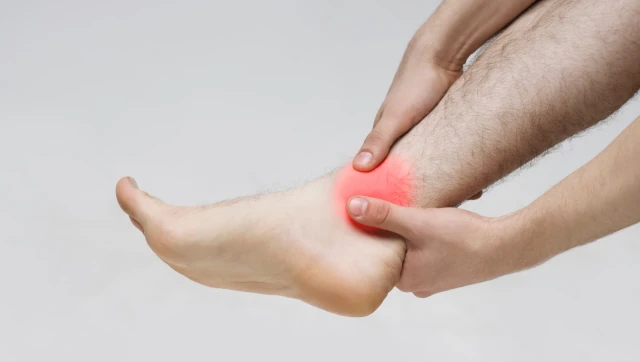
Bone Fractures: Types, Symptoms, Treatment & Recovery Time: Complete Guide
- Dr. Nitika Sharma (MPT)
Connect with our expert physiotherapist for personalized physiotherapy advice.
Bone fractures are among the most common orthopedic injuries, affecting millions worldwide each year. Whether from a sports injury, fall, or accident, fractures can range from hairline cracks to complete breaks, requiring different treatments based on severity.
What Is a Bone Fracture?
A fracture occurs when excessive force causes a bone to crack or break. While some fractures heal with simple immobilization, others (like compound fractures) require surgery, pins, or plates for proper recovery.
Common Causes of Fractures:
- Trauma (falls, car accidents, sports injuries)
- Osteoporosis (weakens bones, increasing fracture risk)
- Overuse (stress fractures in athletes)
- Pathological conditions (bone cancer, infections)
Types of Bone Fractures (With Examples)
1. Closed vs. Open Fractures
- Closed (Simple) Fracture – Bone breaks but does not pierce the skin.
- Open (Compound) Fracture – Bone protrudes through skin (higher infection risk).
2. Complete vs. Incomplete Fractures
- Complete Fracture – Bone breaks into two or more pieces.
- Incomplete (Hairline) Fracture – Small crack that does not fully separate the bone.
3. Common Fracture Patterns
- Greenstick Fracture – Partial break (common in children).
- Comminuted Fracture – Bone shatters into multiple pieces.
- Spiral Fracture – Twisting force causes a helical break.
- Compression Fracture – Bone collapses (common in spine due to osteoporosis).
Symptoms of a Broken Bone
- Severe pain (worsens with movement)
- Swelling & bruising
- Visible deformity (bone looks misaligned)
- Difficulty bearing weight (e.g., can not walk on a fractured ankle)
- Grinding sensation (crepitus) when moving the bone
Seek emergency care if:
- Bone is visible (open fracture)
- Limb is numb/cold (possible nerve/blood vessel damage)
How Are Fractures Diagnosed?
- Physical Exam – Checks for tenderness, swelling, deformity.
- X-ray – Confirms fracture type & alignment.
- MRI/CT Scan – Detects hairline or soft tissue injuries.
Bone Fracture Treatment Options
1. Non-Surgical Treatments
- Casting/Splinting – Immobilizes bone for healing.
- Closed Reduction – Doctor realigns bone without surgery.
- Pain Management – NSAIDs (ibuprofen), ice, elevation.
2. Surgical Treatments
- Open Reduction & Internal Fixation (ORIF) – Uses plates/screws to stabilize bone.
- External Fixation – Metal frame holds bones in place externally.
- Bone Grafting – For severe or non-healing fractures.
How Long Does a Fracture Take to Heal?
| Fracture Type | Average Healing Time |
|---|---|
| Finger/Toe Fracture | 3–6 weeks |
| Wrist (Colles) Fracture | 6–8 weeks |
| Ankle Fracture | 6–12 weeks |
| Tibia (Shinbone) Fracture | 4–6 months |
| Hip Fracture | 3–6 months (may need surgery) |
Factors Affecting Healing: Age, nutrition, smoking, diabetes, and bone health (osteoporosis).
How to Heal a Fracture Faster (Evidence-Based Tips)
1. Eat Bone-Healing Foods
- Calcium-rich: Dairy, leafy greens, almonds.
- Vitamin D: Fatty fish, eggs (helps calcium absorption).
- Protein: Lean meat, beans (collagen supports bone repair).
2. Follow Physiotherapy Exercises
Prevents joint stiffness & muscle loss during recovery.
Can You Prevent Fractures?
- Weight-bearing exercise (strengthens bones)
- Fall prevention (remove trip hazards, use handrails)
- Osteoporosis screening (if over 50 or high-risk)
Frequently Asked Questions (FAQs)
- Is a fracture the same as a break?
Yes—medical professionals use both terms interchangeably.
- Can you walk on a hairline fracture?
Not advised—it can worsen the injury. Use crutches if needed.
- What is the worst bone to break?
Hip & femur fractures are most severe (long recovery, high complication risk).
Connect with our expert physiotherapist for personalized physiotherapy advice.



